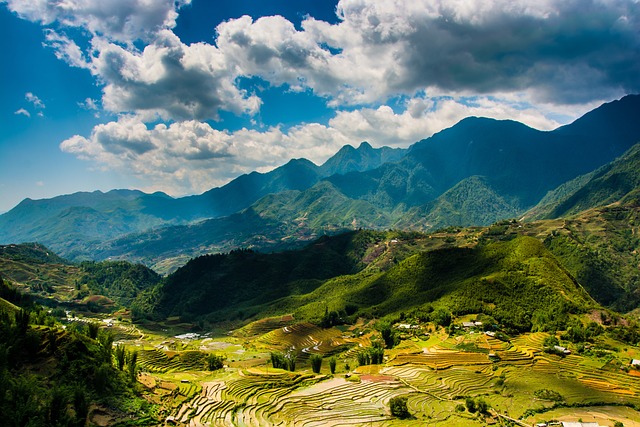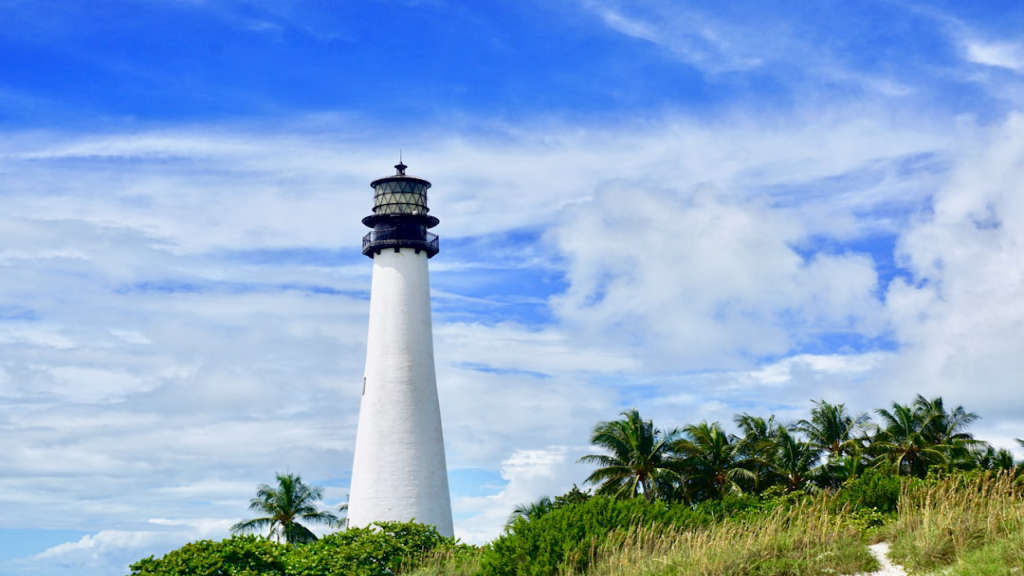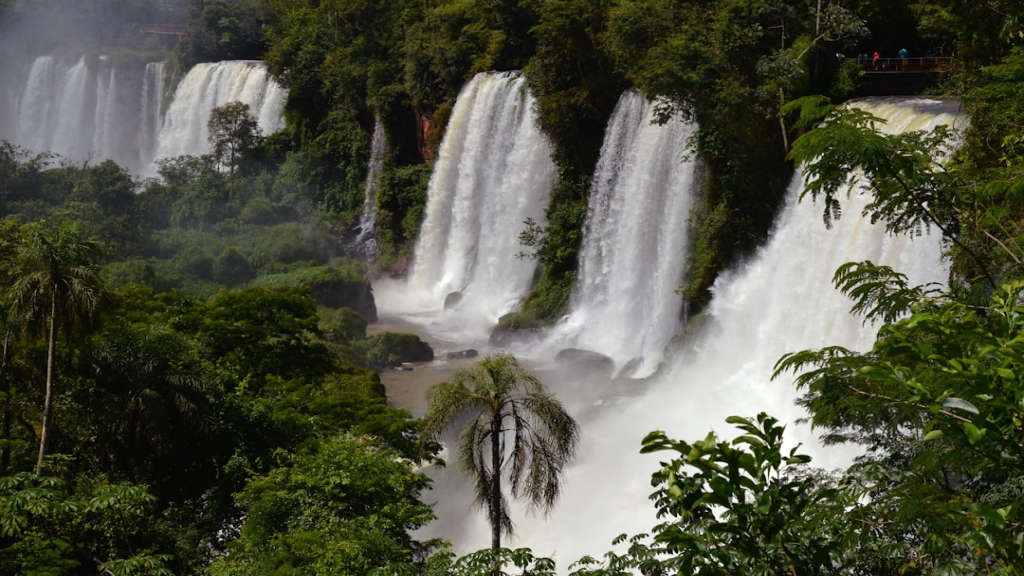The Charming Town of Sapa is a stunning travel destination located in the Vietnam hill station. Known for its Sapa tourist attractions, unique cultural experiences, and breathtaking mountain retreats, Sapa offers an unforgettable trekking adventure. The town’s lush greenery, terraced rice fields, and diverse ethnic minority tribes make it a must-visit destination for nature and culture enthusiasts.
Main Points
- Stunning Travel Destination: Sapa is a charming town located in the Vietnam hill station.
- Tourist Attractions: Sapa offers a range of tourist attractions, including lush greenery and terraced rice fields.
- Cultural Experiences: Visitors can experience the unique culture of Sapa through encounters with diverse ethnic minority tribes.
- Mountain Retreat: Sapa is known for its breathtaking mountain retreats, making it an ideal destination for nature lovers.
- Trekking Adventure: The town offers unforgettable trekking adventures for those seeking an active and outdoor experience.
Sapa: A Gem in the Mountains of Vietnam
When it comes to charming towns nestled in the mountains, Sapa is a gem waiting to be discovered. This picturesque town, located in the northern part of Vietnam, is a popular travel destination for those looking to experience the beauty of a Vietnam hill station.
Why Visit Sapa?
Sapa is known for its stunning landscapes, lush rice terraces, and vibrant hill-tribe communities. Here are a few reasons why Sapa should be on your travel bucket list:
- Charming Town of Sapa: The town of Sapa itself is a sight to behold. Surrounded by mist-covered mountains and dotted with French colonial architecture, Sapa exudes a unique charm that is hard to find elsewhere.
- Sapa Travel Destination: Sapa is a haven for adventure seekers and nature lovers. Whether you’re interested in trekking through the surrounding mountains, visiting local markets, or simply taking in the breathtaking views, Sapa has something for everyone.
- Vietnam Hill Station: As a hill station, Sapa offers a cool escape from the heat and humidity of Vietnam’s lowlands. The refreshing climate, combined with the stunning natural beauty, makes Sapa a must-visit destination.
So, if you’re planning a trip to Vietnam, be sure to include Sapa in your itinerary. This charming town is bound to leave you awe-inspired with its natural beauty and captivating culture.
The Rich Cultural Heritage of Sapa
Sapa, located in the northern part of Vietnam, is a region known for its rich cultural heritage. With its diverse ethnic groups and traditional customs, Sapa offers a unique cultural experience for visitors.
One of the main Sapa tourist attractions is the opportunity to interact with the local ethnic communities. The Hmong, Red Dao, Tay, and other ethnic groups reside in Sapa, each with their own distinct culture and traditions. Visitors can immerse themselves in the daily lives of these communities, learning about their customs, traditional clothing, and handicrafts.
For those seeking a deeper Sapa cultural experience, there are various festivals and events throughout the year that showcase the traditions of the local ethnic groups. These events often feature traditional music, dance, and food, providing a glimpse into the rich cultural tapestry of Sapa.
Aside from its cultural offerings, Sapa also boasts stunning natural landscapes, making it an ideal Sapa mountain retreat. The region is home to lush terraced rice fields, towering mountains, and cascading waterfalls, providing ample opportunities for outdoor activities and exploration.
Local Markets and Handicrafts
One of the highlights of visiting Sapa is exploring the local markets, where visitors can purchase traditional handicrafts and interact with local artisans. The markets are a hub of cultural exchange, where visitors can witness the skill and artistry of the local craftsmen and women.
| Ethnic Group | Traditional Craft |
|---|---|
| Hmong | Embroidery and Batik |
| Red Dao | Silverwork and Herbal Medicine |
| Tay | Bamboo and Rattan Weaving |
Overall, Sapa offers a unique blend of cultural immersion and natural beauty, making it a must-visit destination for those seeking an authentic and enriching travel experience.
Exploring the Breathtaking Landscapes of Sapa
When it comes to exploring the natural beauty of Vietnam, Sapa is a destination that should not be missed. Sapa, located in the northern part of the country, is known for its breathtaking landscapes, lush rice terraces, and diverse ethnic cultures. This picturesque region offers a unique opportunity for travelers to immerse themselves in the beauty of nature while experiencing the rich traditions of the local communities.
One of the best ways to truly experience the beauty of Sapa is through trekking. Trekking in Sapa allows you to venture into the heart of the region, where you can witness the stunning scenery up close and personal. Whether you’re an experienced hiker or a novice trekker, there are trails of varying difficulties that cater to all levels of adventurers. As you trek through the rolling hills and valleys, you’ll be surrounded by spectacular vistas, cascading waterfalls, and vibrant greenery that will leave you in awe.
During your Sapa trekking adventure, you’ll have the opportunity to interact with the local hill tribes, such as the Hmong, Red Dao, and Tay people. These ethnic communities have inhabited the region for generations and have preserved their unique customs and way of life. Meeting these indigenous people and learning about their traditions is a truly enriching experience that allows you to gain a deeper understanding of the local culture.
Key Takeaways:
- Sapa trekking adventure provides an opportunity to explore the natural beauty of the region while engaging in outdoor activities.
- Local hill tribes offer a glimpse into the rich cultural heritage of Sapa, allowing travelers to connect with the indigenous communities.
- Breathtaking landscapes and stunning scenery make Sapa a must-visit destination for nature enthusiasts and adventure seekers.
In conclusion, Sapa is a place of unparalleled beauty and cultural diversity, offering an experience that is truly unique. Whether you’re captivated by the allure of the landscapes or drawn to the rich ethnic heritage of the region, Sapa has something to offer for every traveler seeking an authentic and unforgettable adventure.
Sapa’s Unique Hill Tribe Communities
Located in the northwest region of Vietnam, Sapa is home to some of the most unique hill tribe communities in the world. These communities, each with their own distinct cultures and traditions, are a significant part of Sapa’s appeal to visitors from all around the globe.
The Hill Tribe Groups
There are several hill tribe groups that call Sapa home, with the Hmong, Dzao, and Tay communities being the most prominent. Each group has its own language, clothing, and customs, making them a fascinating subject of study for anthropologists and tourists alike.
Traditional Crafts and Lifestyle
The hill tribe communities in Sapa are known for their traditional crafts, such as weaving and embroidery. They create beautiful textiles that are sought after by collectors and fashion enthusiasts. Additionally, these communities have a close relationship with nature and practice sustainable agriculture and animal husbandry as a way of life.
Challenges and Opportunities
While the hill tribe communities offer a rich cultural experience for visitors, they also face challenges in preserving their traditional way of life in the face of modernization and globalization. However, there are opportunities for sustainable tourism and community development that can help support these unique communities while preserving their heritage.
| Tribe Group | Language | Traditional Crafts |
|---|---|---|
| Hmong | Hmong language | Weaving and embroidery |
| Dzao | Dzao language | Silverwork and batik |
| Tay | Tay language | Basketry and woodcarving |
Visiting the Hill Tribe Communities
For those interested in experiencing the rich culture and traditions of Sapa’s hill tribe communities, there are trekking tours available that allow visitors to interact with the locals and learn about their way of life. It’s a unique opportunity to gain insight into a world that is vastly different from our own.
Overall, Sapa’s hill tribe communities are an integral part of the region’s cultural tapestry, and they offer a glimpse into a way of life that is steeped in tradition and resilience. It’s a privilege to witness and support these communities as they navigate the complexities of the modern world while holding onto their unique identity.
An Adventurer’s Guide to Sapa
Are you ready for an unforgettable adventure in Sapa, Vietnam? Whether you’re an experienced trekker or a first-time hiker, Sapa offers a myriad of opportunities for exploration and discovery. From breathtaking landscapes to vibrant local culture, this guide will help you make the most of your Sapa adventure.
Getting There
When planning your trip to Sapa, it’s important to consider the best way to get there. The most common route is to take an overnight train from Hanoi to Lao Cai, followed by a bus or car ride to Sapa. The journey is approximately 8 hours, but the stunning views along the way make it more than worth it. Don’t forget to pack light but essential items such as hiking boots, a rain jacket, and plenty of water.
Exploring the Trails
Once you arrive in Sapa, you’ll be greeted by lush rice terraces and cascading waterfalls. The most popular trekking routes include Cat Cat Village, Y Linh Ho, and Lao Chai Village. Each trail offers its own unique scenery and challenges, so be sure to prepare accordingly. Hiring a local guide is highly recommended, as they can provide valuable insight into the area’s history and culture.
Immersing in Culture
Aside from its natural beauty, Sapa is also home to several ethnic minority groups, such as the Hmong and Dao people. Take the time to immerse yourself in their traditions by visiting local markets and participating in homestay experiences. You’ll have the opportunity to try traditional cuisine, interact with friendly locals, and gain a deeper understanding of the region’s diverse heritage.
Overall, Sapa is a destination that promises adventure, cultural enrichment, and unforgettable memories. By planning ahead and embracing the local way of life, you’ll undoubtedly have a rewarding experience in this captivating corner of Vietnam. So, lace up your boots and get ready to embark on a journey unlike any other in Sapa.
Sapa’s Delightful Culinary Scene
When it comes to delightful culinary experiences, Sapa is a city that never disappoints. With its rich and diverse food culture, Sapa offers a wide range of mouthwatering dishes that are sure to tantalize your taste buds.
The Local Delicacies
Sapa is known for its vibrant street food scene, where you can find an array of local delicacies such as pho, banh mi, and com lam. These dishes reflect the unique blend of flavors and ingredients that are synonymous with Vietnamese cuisine.
International Influences
While Sapa’s culinary scene is rooted in tradition, it also embraces international influences. You can find a variety of fusion restaurants that offer a creative blend of Vietnamese and international flavors. From Italian pasta to French pastries, Sapa has something for every palate.
The Dining Experience
Whether you’re dining at a humble street stall or a fine-dining restaurant, the dining experience in Sapa is truly unforgettable. The warm hospitality of the locals combined with the inviting aromas of the food create an atmosphere that is both welcoming and indulgent.
“Sapa’s culinary scene is a testament to the rich tapestry of flavors and influences that define Vietnamese cuisine.” – Food Critic
| Dish | Description |
|---|---|
| Pho | A fragrant noodle soup served with tender slices of beef or chicken, fresh herbs, and a squeeze of lime. |
| Banh Mi | A crispy baguette filled with savory meats, pickled vegetables, and zesty sauces. |
| Com Lam | Grilled sticky rice infused with the aroma of bamboo tubes, served with grilled meats or vegetables. |
The Tranquil Charm of Sapa’s Villages
Sapa, located in the northern mountains of Vietnam, is a region known for its stunning natural beauty and the unique charm of its traditional villages. The villages in Sapa offer a tranquil and captivating experience for travelers who are looking to escape the hustle and bustle of city life.
What makes Sapa’s villages so special?
1. Breathtaking Scenery: The villages of Sapa are surrounded by majestic mountains, lush rice terraces, and cascading waterfalls, creating a truly magical landscape.
2. Cultural Immersion: Visitors have the opportunity to interact with the local ethnic minority communities, such as the Hmong and Dao people, and learn about their traditional customs and way of life.
3. Peaceful Atmosphere: The villages exude a sense of tranquility, offering a peaceful retreat for those seeking respite from the chaos of modern living.
Activities to enjoy in Sapa’s villages
- Hiking through the rice terraces and scenic trails, offering stunning panoramic views of the surrounding mountains.
- Visiting local markets to witness the vibrant colors and unique handicrafts created by the ethnic minority communities.
- Homestays with local families, providing an authentic and immersive cultural experience.
- Exploring the ancient rock formations and caves that dot the landscape, showcasing the rich geological history of the region.
Overall, the villages of Sapa are a hidden gem, offering a serene and captivating experience for travelers eager to explore the natural and cultural wonders of northern Vietnam.
Sapa’s Colorful Markets and Handicrafts
Sapa, a small town in the Northern Vietnam, is famous for its vibrant markets and traditional handicrafts. The town’s markets are not only a hub for buying and selling goods, but also a cultural experience that shouldn’t be missed.
The Markets
The town’s markets are a kaleidoscope of colors, with a variety of stalls selling everything from fresh produce to handcrafted textiles. The most popular market is the Sapa Market, where you can find locally made handicrafts, traditional clothing, and fresh produce. The Bac Ha Market is another must-visit, known for its authentic local products and bustling atmosphere.
The Handicrafts
Sapa is also renowned for its traditional handicrafts, including intricately embroidered textiles, handmade jewelry, and unique woodwork. The local artisans take great pride in their work, using traditional techniques passed down through generations. Visitors to Sapa can not only purchase these beautiful handicrafts, but also learn about the traditional methods used to create them.
Experience the Culture
Visiting Sapa’s markets and exploring the local handicrafts is not just about shopping – it’s a chance to immerse yourself in the rich culture of the region. You can observe the traditional clothing worn by the ethnic minorities, taste the delicious local cuisine, and witness the lively atmosphere of the markets.
| Market | Specialty |
|---|---|
| Sapa Market | Handcrafted textiles and fresh produce |
| Bac Ha Market | Authentic local products and bustling atmosphere |
In conclusion, Sapa’s markets and handicrafts offer a unique and colorful glimpse into the traditional culture of Northern Vietnam. Visiting these markets is a must-do for anyone looking to experience the vibrant and diverse local culture.
Trekking Routes and Nature Trails in Sapa
When it comes to exploring the picturesque landscapes of Vietnam, Sapa is a destination that stands out. With its lush green rice terraces, rolling hills, and ethnic minority villages, Sapa offers a paradise for nature lovers and outdoor enthusiasts. One of the best ways to experience the natural beauty of Sapa is through trekking and nature trails.
There are several trekking routes in Sapa that cater to different skill levels and interests. For beginners, the Cat Cat Village trek offers a relatively easy introduction to trekking, taking you through stunning rice terraces and H’mong ethnic minority villages. For more experienced trekkers, the Muong Hoa Valley trek provides a challenging and rewarding journey through rice fields, bamboo forests, and cascading waterfalls.
Aside from the established trekking routes, Sapa also boasts numerous nature trails that allow visitors to immerse themselves in the region’s breathtaking scenery. The Silver Waterfall trail, for example, leads hikers through dense forests to a beautiful waterfall, offering opportunities for birdwatching and wildlife spotting along the way. Another popular nature trail is the Fansipan Mountain trail, which takes adventurous hikers to the summit of Indochina’s highest peak, providing unparalleled panoramic views of the surrounding mountains and valleys.
Guided tours
For those who prefer to explore with the guidance of a knowledgeable local, there are plenty of guided tours available in Sapa. These tours not only ensure safety and convenience but also offer valuable insights into the region’s rich culture and history. Whether you choose to join a group trek or opt for a private tour, the expertise of a guide can enrich your experience and help you discover hidden gems off the beaten path.
Overall, Sapa’s trekking routes and nature trails provide a gateway to the region’s awe-inspiring natural wonders. Whether you’re seeking adventure, tranquility, or cultural immersion, Sapa has something to offer for every outdoor enthusiast.
Sapa’s Changing Seasons: A Year-round Destination
Sapa, located in the northern mountains of Vietnam, is a year-round destination known for its stunning natural beauty and changing seasons. From the lush greenery of spring and summer to the golden rice terraces of autumn and the snowy landscapes of winter, Sapa offers a unique experience for visitors no matter the time of year.
Spring
In spring, Sapa comes alive with blooming flowers and lush greenery. It’s the perfect time for hiking and exploring the local villages nestled among the mountains. The mild temperatures make it an ideal season for outdoor activities.
Summer
Summer brings warm weather and clear skies to Sapa. It’s the best time to witness the region’s stunning waterfalls and take in the panoramic views of the surrounding mountains. The terraced rice fields are a vibrant green, creating a picturesque landscape.
Autumn
Autumn is when Sapa’s famous rice terraces turn golden, creating a mesmerizing scene that attracts photographers and nature lovers from around the world. The weather remains mild, making it a great time for trekking and taking in the breathtaking views.
Winter
Winter in Sapa brings a different kind of beauty, as the mountains are dusted with snow and the landscape takes on a serene, tranquil atmosphere. It’s a magical time to experience the local culture and traditions, as the hill tribes celebrate their unique festivals.
Year-round Attractions
Aside from the changing seasons, Sapa offers year-round attractions such as the Fan Si Pan, the highest mountain in Indochina, and the bustling markets where visitors can experience the local culture and taste the delicious traditional cuisine.
Conclusion
With its changing seasons and year-round attractions, Sapa is truly a destination for every season. Whether you’re a nature enthusiast, a cultural explorer, or simply seeking a tranquil escape, Sapa has something to offer for everyone.
Frequently Asked Questions
How do I get to Sapa?
You can reach Sapa by taking a bus or train from Hanoi, followed by a short bus ride from Lao Cai.
What is the best time to visit Sapa?
The best time to visit Sapa is from March to May and from September to November when the weather is cool and the terraced rice fields are at their most beautiful.
What should I pack for a trip to Sapa?
It’s recommended to pack warm clothing, comfortable hiking shoes, rain gear, and sunscreen.
Are there homestay options in Sapa?
Yes, there are many homestay options in Sapa that offer visitors a chance to experience the local culture and way of life.
What are the popular trekking routes in Sapa?
Popular trekking routes in Sapa include the routes to Fansipan, Cat Cat Village, Lao Chai Village, and Ta Phin Village.
Is it possible to visit Sapa as a day trip from Hanoi?
While it’s possible to visit Sapa as a day trip from Hanoi, it’s recommended to spend at least 2-3 days to fully experience the beauty of the region.
What are the local food specialties in Sapa?
Local food specialties in Sapa include grilled dishes, thang co (a traditional soup), and various dishes made from fresh local ingredients.
Are there markets in Sapa?
Yes, Sapa is known for its vibrant markets, where you can find local handicrafts, textiles, and fresh produce.
Can I book a guided tour in Sapa?
Yes, there are many tour operators in Sapa offering guided tours for trekking, sightseeing, and cultural experiences.
Is Sapa suitable for family travel?
Sapa is suitable for family travel, but it’s important to consider the rugged terrain and plan activities accordingly.




